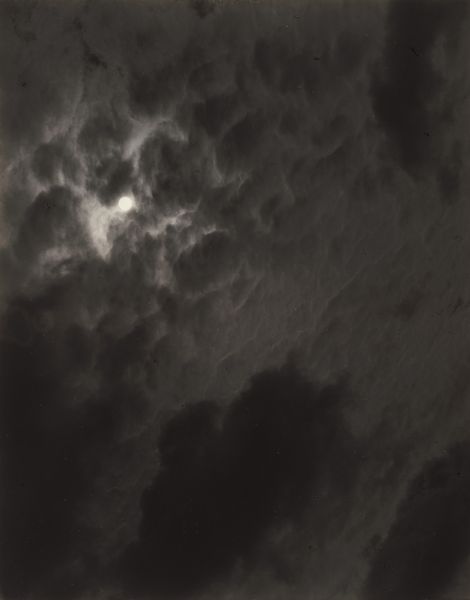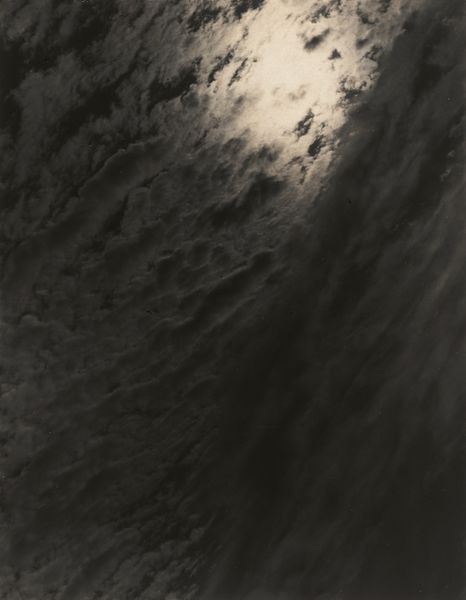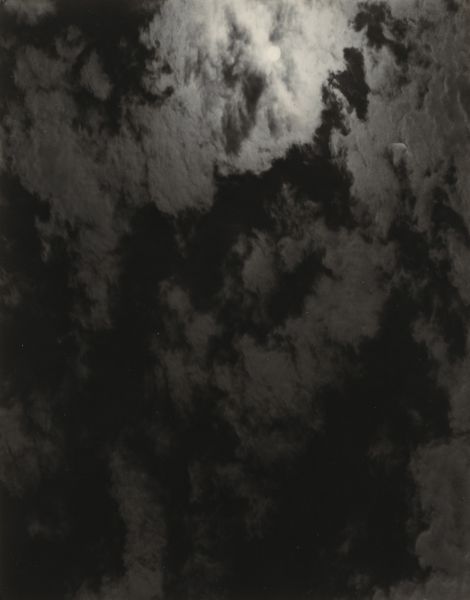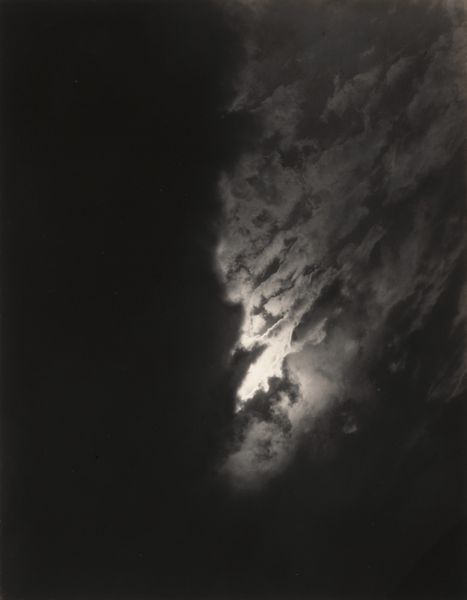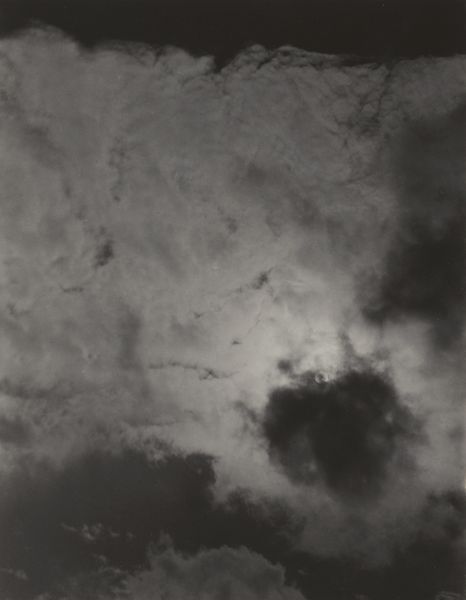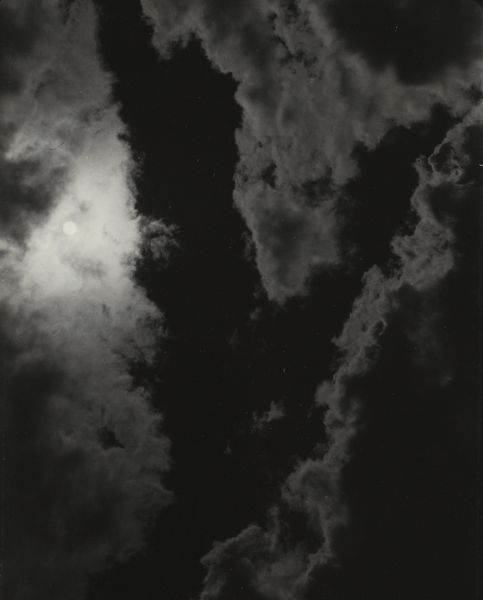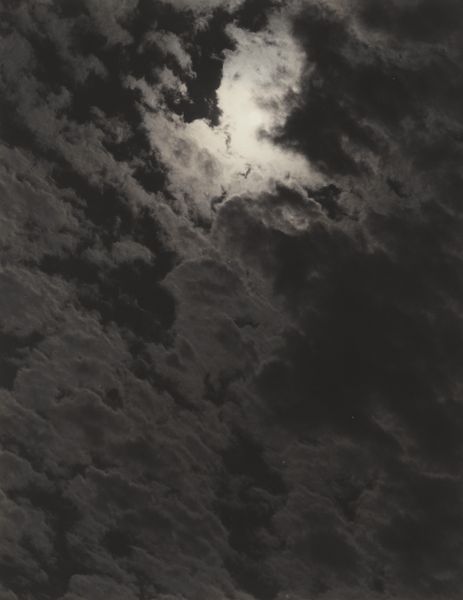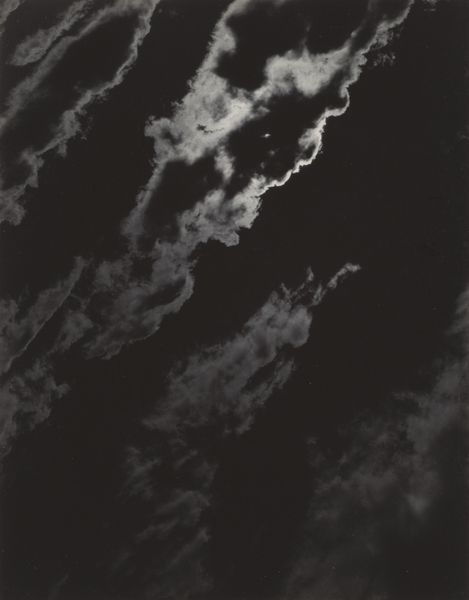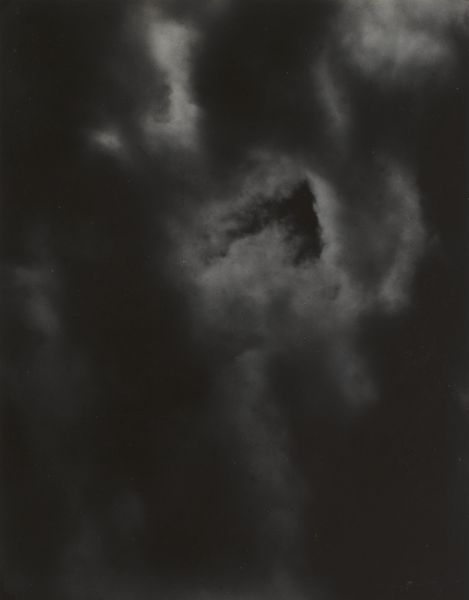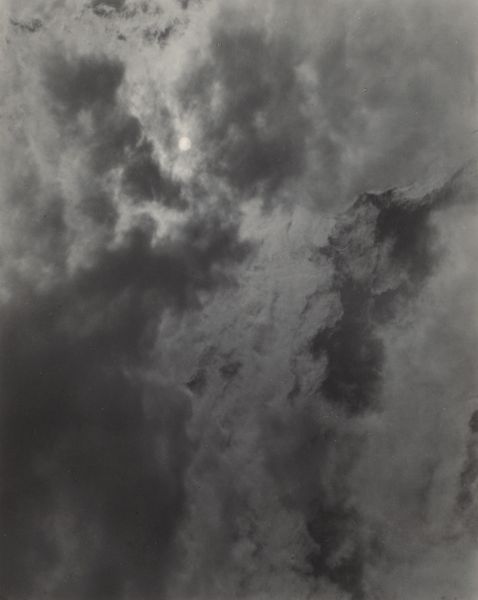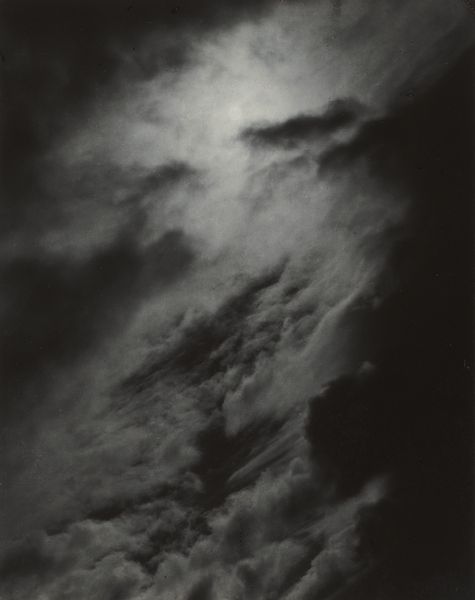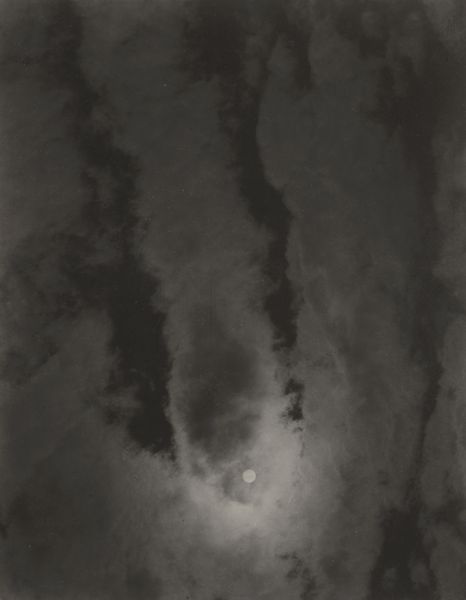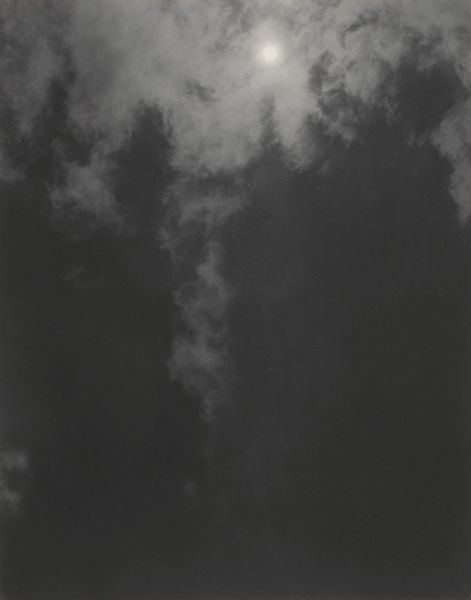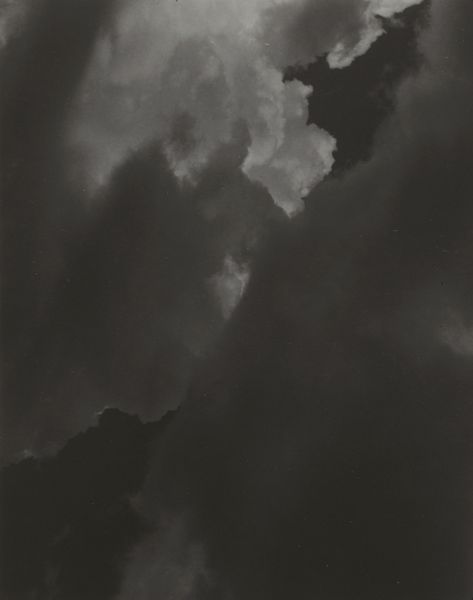
photography
#
pictorialism
#
landscape
#
photography
#
geometric
#
monochrome photography
#
abstraction
#
modernism
#
monochrome
Dimensions: sheet (trimmed to image): 11.9 x 9.2 cm (4 11/16 x 3 5/8 in.)
Copyright: National Gallery of Art: CC0 1.0
Curator: Let’s delve into Alfred Stieglitz's “Equivalent” from around 1929. This is a photograph of clouds. Editor: It's fascinating how Stieglitz chose to photograph something as ephemeral as clouds. What draws me in are the swirling patterns. I'm wondering, what are your thoughts on this particular image, especially given the time it was made? Curator: For me, it’s vital to examine how Stieglitz wrestled with the then-current understanding of photography, seeking to elevate its status amidst other art forms, and the methods he employed to do that. "Equivalents" demands an evaluation of materials – the photographic paper, the chemicals used in development, the very act of pointing a lens skyward and capturing a fleeting moment. Editor: It almost seems like he's abstracting the clouds. Was that intentional? Curator: Precisely! But not in the typical art historical sense. It’s an abstraction born not from pure aesthetic intention but from the capabilities and limitations of the materials themselves. How long did the exposure take? What specific lenses did he favor? Did his darkroom practices lean toward manipulation? Each question pushes us to appreciate the concrete decisions shaping what you see. Also consider what this abstraction might represent within its historical context. What sort of philosophical values might the art market value and reflect through such pieces? Editor: So, it's not just about the clouds themselves, but also the photograph as an object and its place in the art world? Curator: Exactly. The “what” and “how” become equally meaningful as the “why.” This isn’t simply about representing a cloud, but about acknowledging photography's physical nature and socio-economic value. Editor: This way of thinking provides such an amazing framework. Thanks! Curator: Indeed, seeing the artwork's physical aspects helps in deeply engaging with the social factors of art production!
Comments
No comments
Be the first to comment and join the conversation on the ultimate creative platform.
